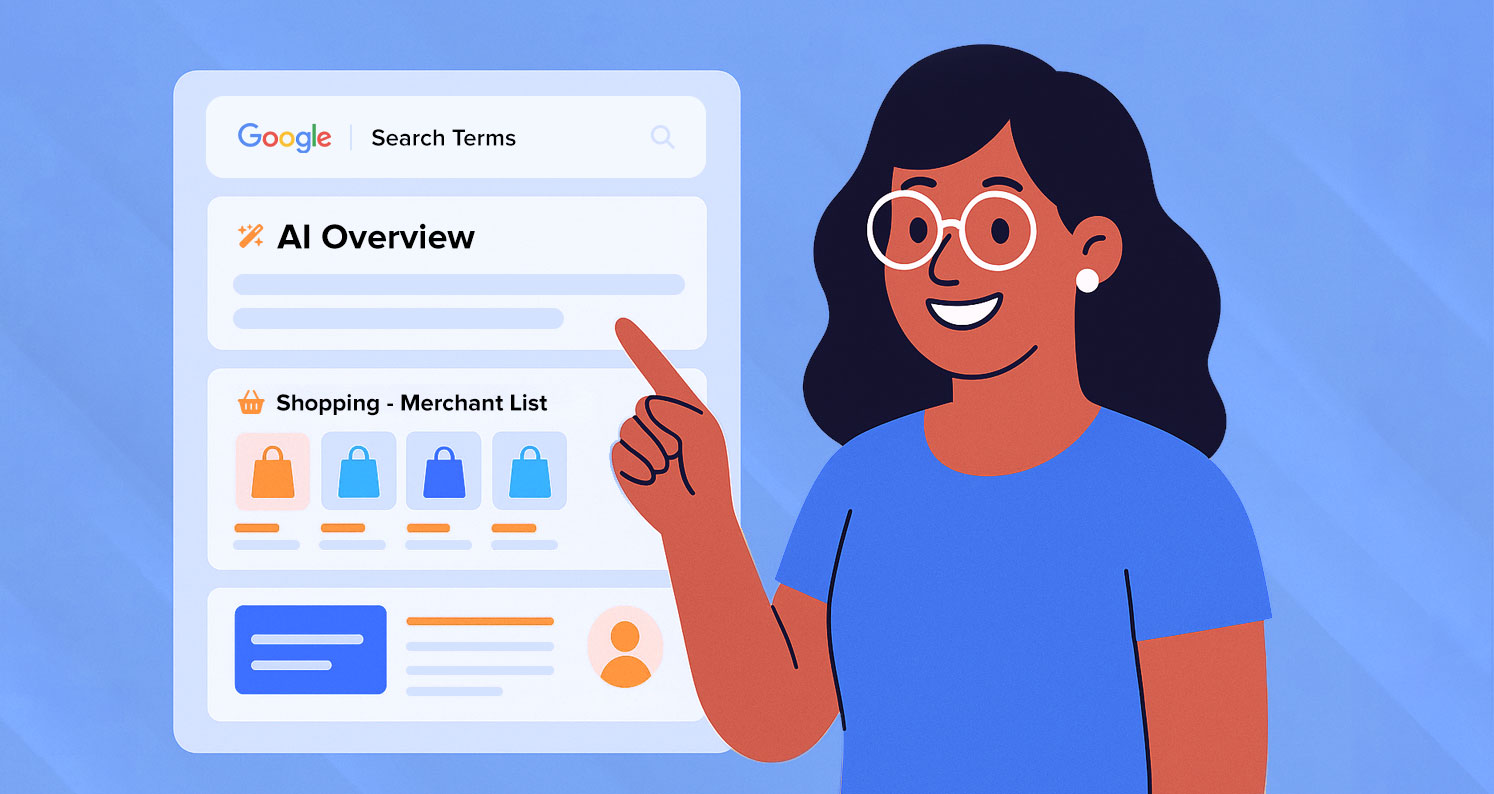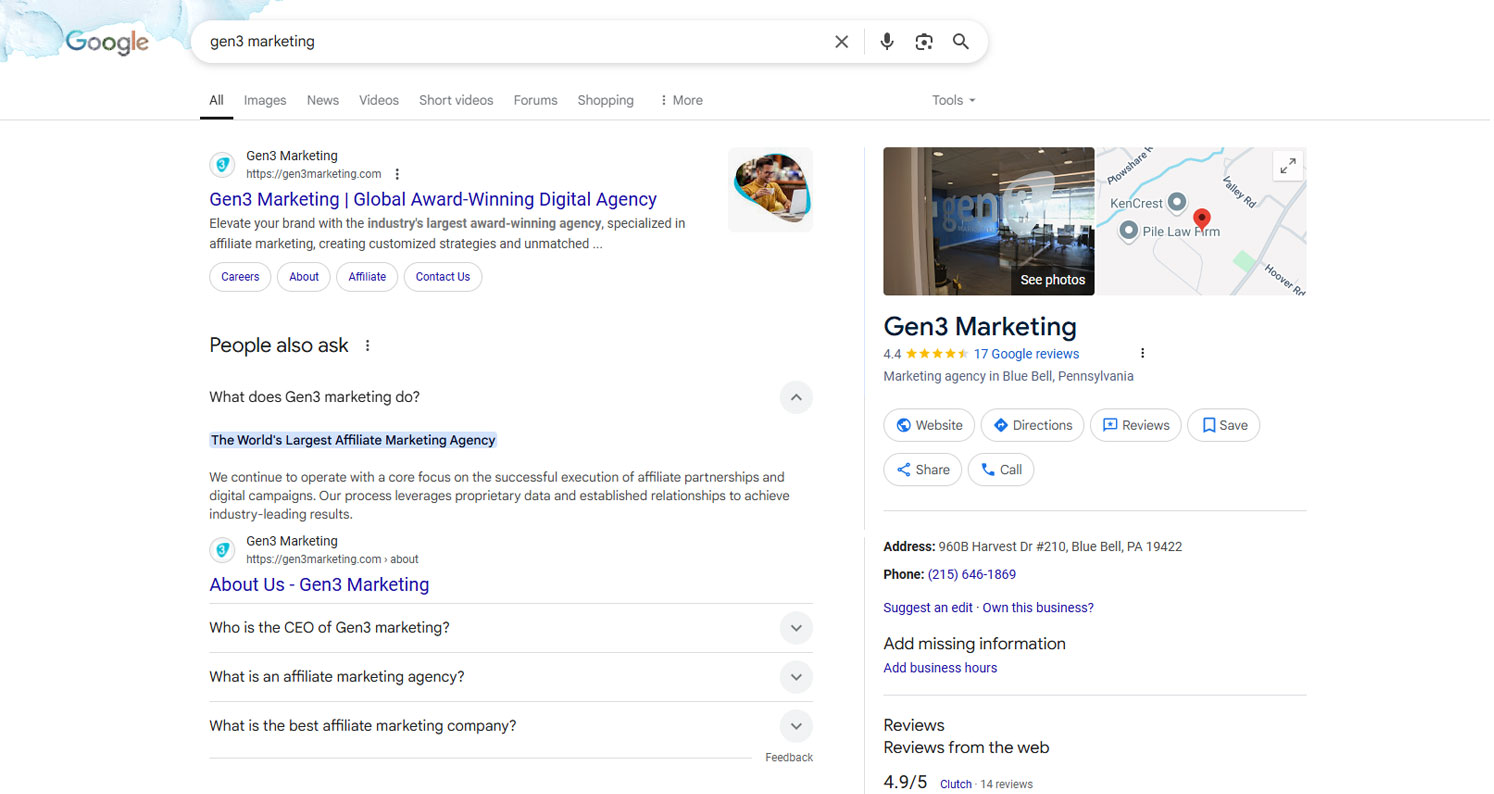Google SERP Changes: Navigating a New Search Landscape
Learn about Google Search SERP changes and how to successfully overcome organic landscape shifts for continued SEO success.

Over the years, Google’s Search results page changed in countless ways.
We’ve seen it all:
- The familiar ten blue links.
- An expansion to include images and video results.
- The addition of extra paid ad slots at the top and bottom of the page.
With every iteration, conjecture that “SEO is dead” spreads like a wildfire in related forums and publications. This causes ripples in organic campaign performance and marketers’ approach to SEO strategies.
For brands to find SEO success, they must understand and embrace these changes.
Let’s first look at the collective changes that have recently shaped the new reality of modern search engine results pages (SERPs). We’ll also review how they’ll affect search strategies going forward, from paid ads to organic search optimizations.
It’s all about user intent.
Since the dawn of search engines, the main goal has been to provide answers to user search queries.
Like a huge library index, search engines run web pages through their algorithms to align user intent with results. That’s why it’s so important to focus on users when optimizing anything for search engines.
This led to different SERP layouts.
By developing different features and visual elements, Google could now tailor experiences to its users. This would ideally lead to search results being more closely aligned with user intent.
Informational queries—“benefits of SEO” or “gen3 marketing” for example—might display featured snippets or other SERP features. These might include knowledge panels, “people also ask” boxes, or discussions and forums. Now, they even show AI overviews.
Going further, transactional or commercial queries for specific products might show more shopping ads and organic product listings. Google even allows users to start shopping straight from the SERP.
Queries that ask for specific services would trigger “local” results. The result can output associated features on the page, like local packs and business listings.
These are the key facets that make up modern Google SERPs. To excel in organic search marketing, you must consider these changes as part of your strategy.
Google Search accounts for seasonality and other trends.
In recent years, Google recognized that user intent is dynamic. It can change temporarily or even permanently. Thus, seasonality, trends, and current events began to influence what appears in SERPs.
Say a user makes a query about something pertaining to a very popular topic. Google may answer the question in a greater social context, presuming this was their intent. This holds true even if the user doesn’t explicitly mention the topic in their search query.
We’ve seen these features during the COVID-19 pandemic and US presidential elections. Today, you might see them with tariffs, stock market shifts, or other major developments.

Search results are frequently personalized based on browsing behavior and other factors.
Google Search results can be highly personalized.
Personalization has widely impacted search results, as well. No two queries are the same in the eyes of Google, even if the wording is identical. What you see on your screen when you search “SEO services” can be different from what your colleague might see in their SERP.
Personalization in search results all depends on your previous queries and interests as expressed through your past online behavior. Google collects information about users to ensure their search engine meets the most likely intent. In other words, they’re not treating it like some generic query.
For instance, if I were seeking SEO services, Google may show SEO services near me in a local map pack. This would include the top three local business listings, plus SEO agencies and other relevant sites in organic listings.
On the other hand, if I wanted to learn more about the SEO industry, Google’s output may be more tailored to that intent. I would find articles and blogs about different aspects of SEO. There might also be an AI overview summarizing the topic.
In short, user intent affects SERP outcomes in more ways than one. It can even affect visibility on an individual level.
Understanding the intent behind every query is now key when decoding the relevance of your site’s pages. If Google decides a user’s intent does not match your content, what once ranked well may not be shown at all.
SERP features are more prominent than ever.
As Google gets smarter, and as the Internet expands, more factors will determine which answers appear first in search results.
To decide whether the experience is good or poor, Google may gauge it using clickthrough rates (CTR) and “click backs.” Basically, Google tracks whether you click a back button after a search. This information, along with other data, helps evaluate the relevance and quality of results. Google uses this data to further improve its search algorithm.
Over time, Google introduced more features beyond the standard blue text links. This wasn’t only to improve their performance. It also helps websites draw higher-quality traffic when users do end up clicking through to the site.
These SERP features are core to Google’s contemporary layout and success in today’s SEO landscape.
AI Overviews
In 2024, Google introduced the latest innovation to the search result: AI-generated summaries, called AI overviews.
Aiming to give users quick, yet comprehensive answers to their queries, Google placed them above all other results in SERP. This slashed the clickthrough rates for many organic (and even some paid) results.
The latest research indicates that 30% of all searches display AI overviews. However, problem-solving and question-based searches have a much higher volume. Up to 74% of these queries trigger the AI-generated feature.
AI overviews typically focus more on general information. As a result, it mostly affects top- and mid-funnel queries for ecommerce and B2B sites. This is when users are mostly gathering information or in a state of consideration.
The AI overview feature affects about a third of all non-branded and roughly twenty percent of branded searches. This potentially can slow the customers’ buying process. However, it can also help influence brand perception in the earlier shopping stages.
AI overviews are here to stay, expanding into organic search and impacting consumer perception. Brands must find ways to stay visible in generative search results, and modern SEO strategies must take this into account.
The best SEOs will focus on appearing for relevant queries and having content linked in AI overviews.
Shopping & Merchant Listings
Users have multiple ways to shop on Google. Here are the two most common:
- They can select the Shopping tab from Google’s home page to go directly to Google Shopping.
- They can search for the items they’d like to buy from the main Google Search page. These are often accompanied by paid and organic Merchant Listings.
The biggest difference between the two is the experience that Google provides. The Shopping tab enhances the products shopping experience by featuring free and paid listings. It also offers a robust user interface.
Free Merchant Listings appear directly within the general Google Search results, displayed in multiple formats with varying features.
The most popular shopping features include:
- Product Carousels: Prominently featured in SERP product cards with quick product information and links to multiple vendors.
- Product Snippets: A text result that includes additional product information such as rating, price, and availability. Product snippets to the site where you can purchase the item.
- Product Knowledge Panels: Detailed product information pulled from the knowledge graph, with links to relevant vendors.
- In Stores Nearby: Product carousel featuring items available at local stores.
- Product Image Rich Results: Product tags with enhanced information within Google images.
Today, the SERP features Merchant Listings so prominently that SEOs must now monitor them. This is critical when optimizing ecommerce sites looking to stay relevant and competitive for transactional or commercial queries.
Currently, SEO strategies require a more engaged approach than basic title tag and meta description updates. Merchant Center configuration audits are now essential. SEOs must ensure datafeeds are accurate, product information is current, and structured data is complete to ensure client success.

This example of a Google Search results page from 2025 includes numerous SERP features, indcluding people also ask, a knowlege panel, and various other elements to help users get the information they’re seeking.
Existing SERP features have evolved, too.
Google Search results developed multiple different features to help visualize results and present information to users directly. This dramatically affected CTR in the past but also improved the quality of traffic coming to sites.
Featured Snippets
Content excerpts that Google extracts from web pages to provide an instant answer within search results. Featured snippets display in a box and link to the source.
They used to be prominent at the top of search results, but AI overviews have replaced them. This positioned them lower on the page, slashing their performance metrics and CTRs.
Knowledge Panels
These information boxes appear on the right side of Google desktop results (or the top on mobile devices). Knowledge panels show a summary of information related to the specific query.
Knowledge panels are another Google Search feature that aims to provide a comprehensive answer within search results. These results provide high-level information that may reduce clicks to relevant sites for related queries.
People Also Ask (PAA)
A set of related questions to the original search query. With this feature, Google aims to help users explore the topic in more depth without leaving the search results. This can also help SEO professionals inform content strategies that address user needs and questions.
Rich Snippets
Rich snippets are also known as rich results. They are the way Google enhances standard text search results with additional information and visual data (e.g., review stars or shipping details). This feature aims to boost your listing’s visibility and CTR. It also improves user experience while driving higher quality traffic to your site.
Image & Video Carousels
Visual features in Google SERP that allow users to browse through multiple images and videos directly within search results. Searching for specific products, places, or visual concepts often triggers images. Meanwhile, video-related topics like tutorials, reviews, and entertainment trigger videos.
What about paid ads?
Paid ads entered the search landscape a long time ago and quickly became the core component of many search queries. They have since been a prominently displayed feature in Google SERPs.
Due to the high-profile, top-of-page placement, paid ads can quickly increase brand visibility and drive high traffic to the websites.
As a result, whenever paid ads appear, organic listings risk losing traffic, even if impressions remain high.
The main reason for this is that paid ads occupy the best, most clicked locations. Some ads even include extensions that take more vertical space. These ad extensions push organic results further below the fold.
Google Search has two main types of paid ads:
- Text Ads: The most common type of search ads, look similar to organic listings but also display “Sponsored” tag.
- Shopping Ads: These are paid product carousels that appear at the top of the page under the heading “Sponsored.”
While SEO campaigns may take some time to get it right and start driving traffic to your site, PPC or paid ads can help you drive traffic in the short term.
As evident with many new and existing search features, most of them intend to keep users within the Google platform. Google wants to give all the information users need right in search results. They seem to believe this better meets user needs.
The result, as many websites and digital marketers indicate, has been a decline in organic search traffic. Furthermore, Gartner predicts a 50% drop by 2028 due to AI search, Google updates, and changing user behavior.
To mitigate the impact of declining traffic, it’s crucial to adapt to the new search landscape reality. Brand visibility must be a focus. Creating and optimizing high-quality content is as important as providing great products or services to your customers.
What’s Google’s big focus these days?
Lately, we’re seeing greater emphasis around Google Shopping. This positions all the filters and facets of a typical ecommerce website right there in organic search results.
Of course, last year, we saw the biggest change yet to happen to Google Search, which was the launch of AI overviews. New generative AI features in search replaced the coveted, prominent spot at the top of search rankings. (Sponsored links, a featured snippet, or the number one organic result previously held this real estate.)
All these features tend to keep users on Google unless there’s a strong reason to leave Google. As a result, outside-the-box content strategies and on-site technical optimizations are more important than ever. Keep this in mind if you’re keen on keeping up with today’s organic search trends.
As Google Search changes, so should your SEO strategy.
Google Search is endlessly evolving. The best way to keep up and stay ahead of these changes is to partner with the right SEO agency. Our experts have helped brands of all sizes navigate the waters of organic search marketing. Have us help you, too.
Get your free SEO site review. Contact us to learn how we can help you improve your visibility and relevance in Google Search.
More Blogs
Psychological Safety: How it Drives Better Marketing Solutions
Fostering an environment where team members feel psychologically and emotionally safe leads to better marketing outcomes.As agency work environments grow more flexible, workplace culture must evolve as well. For agencies, like Gen3 Marketing, who strive to deliver...
How AI & Voice Commerce Are Changing Affiliate Marketing
Artificial Intelligence (AI) and voice commerce are changing the affiliate marketing channel. Learn how you can capitalize on the new opportunities offered by these technologies.Artificial intelligence and voice commerce are transforming how consumers discover and...
How Long Does SEO Take?
Understanding the timeline for SEO success is essential. We dive into a typical SEO timeline, detailing key factors that affect outcomes.Every business considering SEO services for their brand and website asks the same (very reasonable) questions: How long does SEO...

 By
By 

